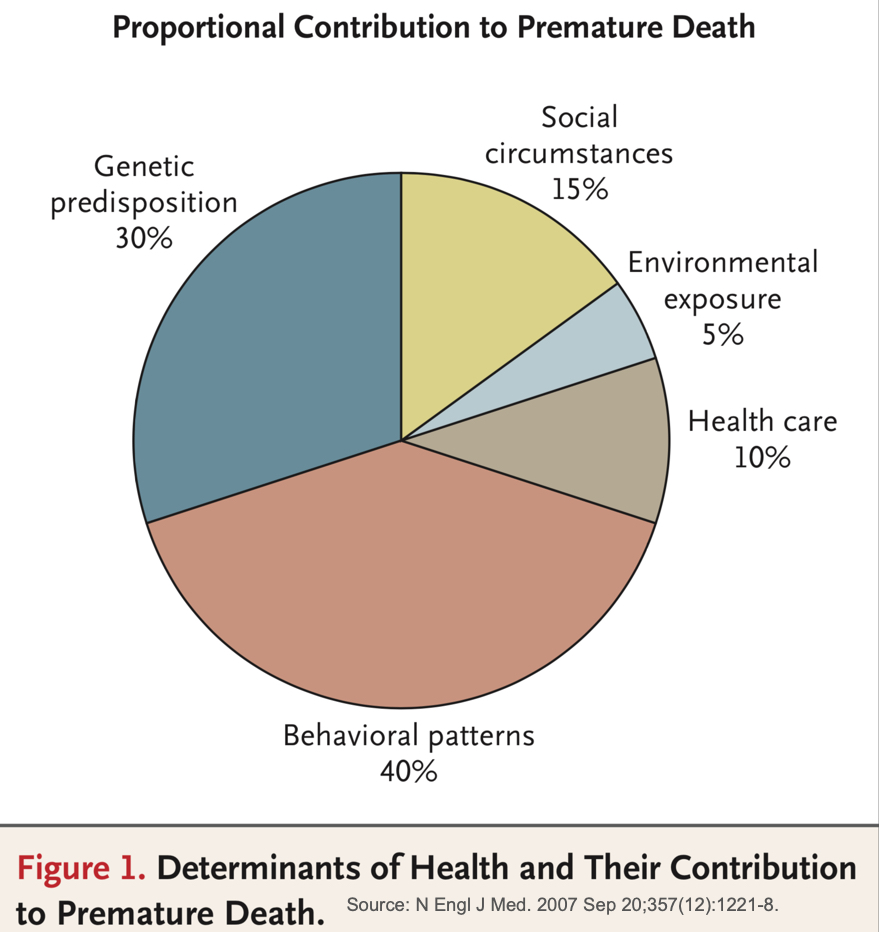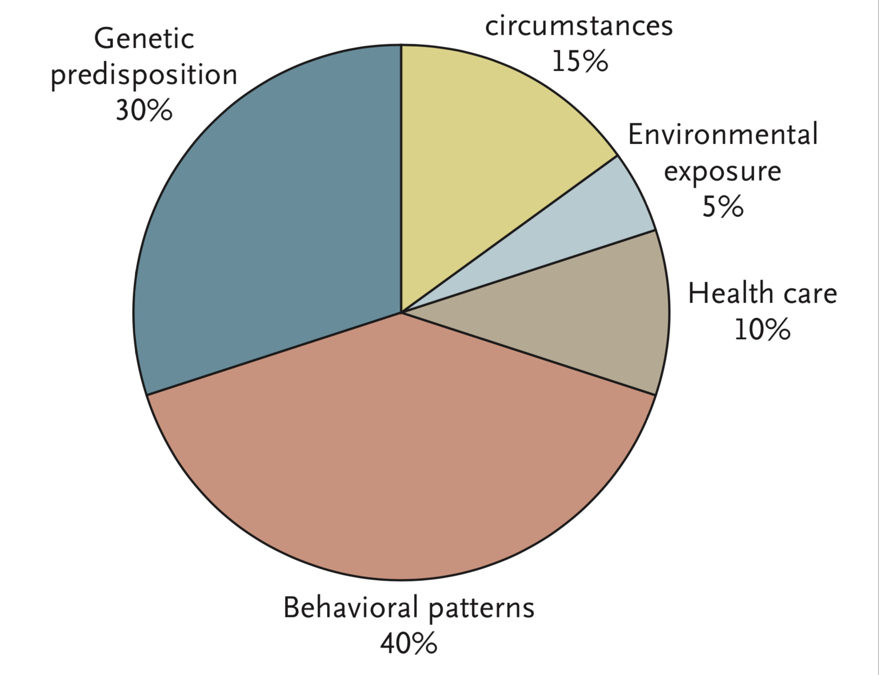According to research, healthcare contributes only ten percent (10%) to premature death. Behavioral patterns contribute 40%, while social circumstances contribute 15%. Genetic predispositions contribute 30%, and environmental exposure contributes 5%.
That is:
- 40% – Behavioral patterns.
- 30% – Genetic predisposition.
- 15% – Social circumstances.
- 10% – Health care.
- 5% – Environmental exposure.
As a primary care provider and patient advocate, these statistics are sobering. If we, as physicians, don’t look at our patient’s entire lives and only focus on their medical complaints, we miss out on a huge opportunity to impact our patient’s health in more meaningful ways.
That’s why I make it a point to become a life coach to my patients and not merely a clinician who diagnoses and treats their prevailing health conditions. I look at my pediatric patients and anticipate the kind of health I want them to have twenty years later, forty years later, and for the rest of their lives. I look at my adult patients and think of the health they should have when they are in their eighties and nineties. To make a positive impact on my patients’ lifelong health, I have to coach them on behavioral and social choices. While I might have little to do with their underlying genetic predispositions, I can influence the genetic predisposition of my younger patients’ future children and grandchildren. In fact, I can influence their epigenetic factors.

Reference: N Engl J Med. 2007 Sep 20;357(12):1221-8.

